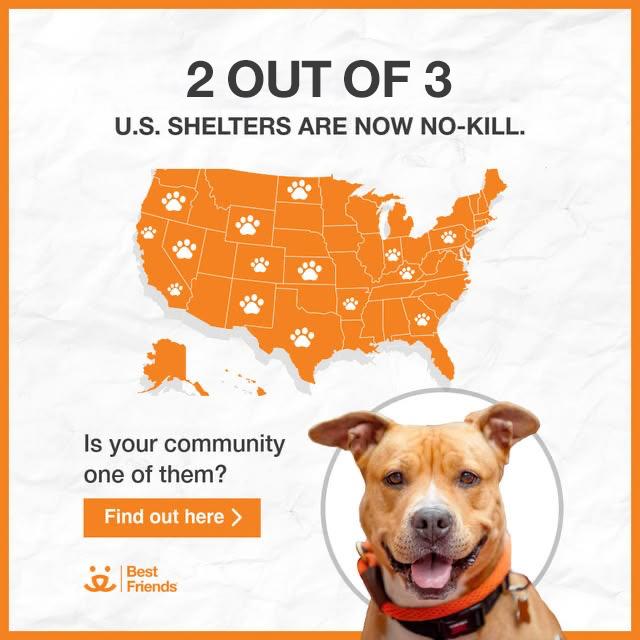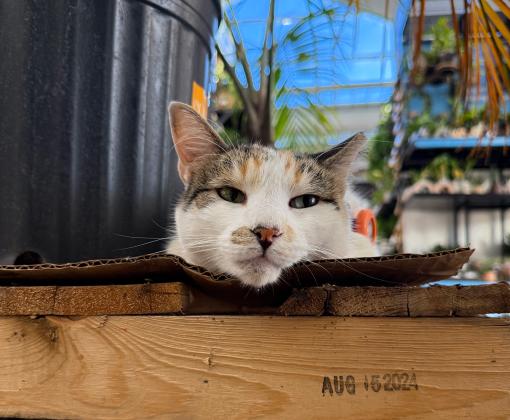
Community Cat Trap-Neuter-Vaccinate-Return (TNVR) Success Stories
Cat trap-neuter-vaccinate-return (TNVR) is a management technique in which community cats are humanely trapped, evaluated, spayed or neutered by a licensed veterinarian, ear-tipped to show they’ve been sterilized, sometimes vaccinated against rabies, and then returned to their original location. (Not all TNVR programs include a vaccination component, but vaccination is considered best practice.)
Targeted TNVR (i.e., maximizing the number of cats sterilized at a given location) offers several benefits over the inefficient approaches that have been used for generations, such as complaint-driven impoundment, which often leads to the killing of those cats. These benefits include:
- Reduced shelter intake of cats and kittens
- Reduced shelter deaths of cats and kittens
- Stabilized and over time reduced community cat populations
- Reduced number of nuisance complaints
The following are examples of TNVR success stories. It’s important to recognize that each of the examples cited below is a success in its own way. The studies in Alachua County, Florida, and San Jose, California, focus on decreased intake and deaths in shelters, rather than reduced community cat populations (a more difficult metric to quantify). From an animal welfare perspective, such examples are compelling, but they might mean little to stakeholders whose most important (or perhaps only) measure of success is population reduction.
Published cat TNVR case studies
2004-2020: San Francisco, California
An initial population of 175 cats was reduced by 99.4% over 16 years of targeted TNVR efforts. Of the 258 total cats enrolled between 2004 and 2020, only one remained on-site at the end of the program period. [1]
2011-2019: Louisville, Kentucky
This study examined the results of targeted TNVR efforts in Jefferson County, Kentucky. Over eight years, feline admissions at Louisville Metro Animal Services declined by 42.8%; 94.1% fewer cats were killed over the same period. [2]
2012-2017: Various U.S. cities
Results of six large-scale, three-year, shelter-based TNVR programs revealed a median reduction of 32% in feline intake. Of particular interest was the 40% median reduction in the number of kittens entering the shelters involved. The authors suggest that the general trend of decreased kitten intake is likely evidence of TNVR’s community-level impact. [3]
2007-2016: Chicago, Illinois
As part of a neighborhood TNVR program, distinct groups of cats were tracked from four to 10 years. Records revealed average population reductions of 54% from initial population levels and 82% from each group’s peak level. [4]
1999-2013: Key Largo, Florida
Ongoing TNVR efforts led to a 55% reduction in community cat numbers over 14 years, from 455 to 206 cats. [5]

See how your community is doing
2010-2013: San José, California
Four years after implementing its shelter-based TNVR program, San José Animal Care and Services observed a 29% decrease in feline intake and a decrease in shelter killing from over 70% of intakes in 2009 to 23% in 2014. [6]
2006-2007: Alachua County, Florida
Researchers documented a 66% decrease in shelter intake of cats from a “target” ZIP code of focused TNVR efforts, compared with a 12% decrease from the rest of the county. Shelter deaths for cats coming from the target area decreased by 95% over the same period, compared with a 30% decrease observed in the rest of the county. [7]
1998-2005: Randolph County, North Carolina
A 36% average decrease in population among six sterilized groups was observed in the first two years. Three unsterilized groups experienced an average 47% increase over the same period. [8] A four-year follow-up census found that one group had been reduced from 10 cats to none. At seven years, another group originally containing 10 cats had been reduced to one cat. [9]
2005-(ongoing): Durban, South Africa
Since at least 2005, a TNVR program has been in place on the campus of the University of KwaZulu-Natal’s Howard College, which is recognized as an “urban conservancy … interspersed with conservation-sensitive natural bush habitat and a nature reserve on the northern border.” [10] Sterilization efforts led to a 38% reduction in the number of cats on campus (from 55 to 34) after four years. [10,11]
1991-2002: University of Central Florida (Orlando, Florida)
A campus TNVR program led to the adoption of nearly half (47%) of the 155 cats living on campus over an 11-year observation period. In 2002, just 23 cats remained on campus. [12] Over the subsequent 17 years, the program further reduced the population of free-roaming cats by 57%, from 23 to 10 cats. As is often the case with TNVR programs, adoption played a key role, with 92 of the 204 cats (45%) recorded on campus being adopted through the program. [13]
2000-2001: Rome, Italy
A survey of caregivers (caring for 103 cat groups) revealed a 22% decrease overall in the number of cats, despite a 21% rate of “cat immigration.” Although some groups experienced initial increases, the numbers began to decrease significantly after three years of TNVR. “Colonies neutered three, four, five or six years before the survey showed progressive decreases of 16, 29, 28 and 32%, respectively.” [14]
1992-2009: Newburyport, Massachusetts
A targeted TNVR program reduced and, after 17 years, eliminated an estimated 300 cats from Newburyport’s waterfront. [15]
1988 (approximately): Carville, Louisiana
A TNVR program on the campus of a research hospital reduced the original population of free-roaming cats by 25% (from 40 cats to 30) and the overall population by 10% (due to the arrival of six new cats) over three years. No new litters of kittens were reported during this same time period. Prior to the program’s implementation, several cats had been removed annually but “a noticeable reduction in overall numbers was never achieved.” [16]
Reviews and related studies
A 2008 review of the literature on feral cats and feral cat control, including several studies of TNVR, emphasizes the importance of context in effective management: “When considering feral cats, one solution does not fit all situations because all situations are different.” [17] Robertson concluded, “There is scientific evidence that [TNVR] under certain conditions can control the feral cat population, and is a viable, humane alternative to other methods previously used,” and recommends “continued and increased funding (by private welfare organizations and by municipal and government agencies) … for long-term success.” [17]
Although the campus of the University of KwaZulu-Natal’s Howard College (Durban, South Africa) is recognized as an “urban conservancy” (i.e., “urban areas interspersed with conservation-sensitive natural bush habitat and a nature reserve on the northern border” [10]), researchers “suggested that to control the feral cat population effectively in this urban conservancy, a suitable and ongoing sterilization programme, which is run in conjunction with a feral cat feeding programme, needs to be implemented.” [18]
Removal, on the other hand, would likely create a “vacuum effect,” which means other cats move into the now-available area. The researchers say that “the ‘vacuum effect’ would encourage subsequent reinvasion of there. It may be more costly both financially in the long-term and in terms of effects on the indigenous wildlife populations if immigration of new, unsterilized cats were to take up residency on the campus.” [18]
Beginning in 2001, hysterectomy has been used to control the population of feral cats at the Rio de Janeiro zoo. “Between 2001 and 2004, the estimated population became stable, showing a trend to decrease.” [19] Over the next four years, estimated population numbers dropped 58%, from 40 cats in 2004 to 17 cats in 2008. [20]
This is in contrast to the failure of prior trap-and-kill efforts to eradicate the cats: “Before we started this work in 2001, the population of cats of the RIOZOO suffered constant interventions but without a pre-established methodology and only with the simple objective of eliminating the population. Therefore, the population of cats fluctuated, the animals showed weak social relations and behavioral interactions reflected by weak individual territorial defense, and this probably opened the way for high migration rates.”
Using sophisticated population modeling, researchers with the Alliance for Contraception in Cats & Dogs have shown that “successful population management under conditions of demographic connectivity” could be achieved by sterilizing 30% of a given population every six months. [21]
While the same modeling showed that comparable success could be achieved by removing just 20% of the cats every six months, the authors acknowledge that “economic, social and other considerations also will factor prominently into the final choice(s) among multiple management options.” Chief among these social considerations is TNVR’s broad public support. [22]
